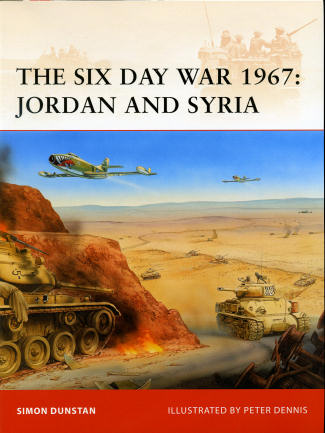 The Six
Day War in 1967 was one of nearly stunning Israeli successes against three major
powers in the region. The biggest one was Egypt in the south with Jordan and
Syria to the east and northeast respectively. Iraq and some of the other
countries in the region also supplied men and equipment to the conflict, but by
and in large, it was those three that bore the brunt of the war. They also bore
the brunt of the losses, something that took years to build back up again.
The Six
Day War in 1967 was one of nearly stunning Israeli successes against three major
powers in the region. The biggest one was Egypt in the south with Jordan and
Syria to the east and northeast respectively. Iraq and some of the other
countries in the region also supplied men and equipment to the conflict, but by
and in large, it was those three that bore the brunt of the war. They also bore
the brunt of the losses, something that took years to build back up again.
Much of the reason that the Israelis were so successful,
despite being out manned and out gunned was a lack of coordination on the part
of the adversaries, a higher level of training, and superior military
intelligence. This latter aspect of things allowed Israel to intercept and
decode message traffic that told them exactly what their enemies were going to
do. This allowed them to put in the first strike that pretty well eliminated
Egyptian air power and to take over key spots in the West Bank. Without these
advanced strikes, the war may well have been a lot more costly in terms of
casualties and may not have gone as well as they did for Israel. However, it did
go well and provided Israel with not only defensive space, but also with some
bargaining chips that could be used years on down the road. I found it
particularly interesting that just after the war, Israel offered to return all
the captured territory in exchange for Syria, Jordan, and Egypt's promise to
acknowledge and allow Israel the right to exist free from attack. Of course that
did not happen and led to decades of hot and warm wars.
Simon Dunstan, who is quickly becoming my favorite Osprey
author, does his usual superlative job of telling the story of the conflict
between Israel and the two nations of Jordan and Syria. As with all books in
this series, there is a background to the situation as well as the various plans
of the antagonists. We then get to look at the people commanding the troops and
how well prepared (or not) their forces were. Then the book divides itself into
telling two different stories of the war. One is of the West Bank against the
Jordanians. This includes the battles for and around Jerusalem with many
individual tales of heroism and bravery. The other concentrates on the Golan
Heights and the fight against Syria. Both of these areas of battle were hard
fought, but in the end the Jordanian and Syrian forces broke into a fast
retreat. In fact, there were some political skullduggery in the UN to prevent a
cease-fire from taking place until the Israelis had completely taken over the
Golan Heights. The book finishes with the aftermath of the war and what few
places are available for history buffs to visit.
All of this is superbly illustrated by Peter Dennis who does
some great art work and, I assume, does the maps and 3D battlefield
illustrations as well. There are the usual great selection of period photos of
the war and those who fought in it.
You can add this to your list of books that you simply must
have. It is a great read and one that I know you will enjoy.
December 2009
For more on the complete line of Osprey books,
visit www.ospreypublishing.com. In the US, it is
Osprey Direct at 44-02 23rd St, Suite 219, Long Island City, NY 11101., where you can
get a catalogue of available books.
If you would like your product reviewed fairly and quickly, please contact
me or see other details in the Note to
Contributors.
 The Six
Day War in 1967 was one of nearly stunning Israeli successes against three major
powers in the region. The biggest one was Egypt in the south with Jordan and
Syria to the east and northeast respectively. Iraq and some of the other
countries in the region also supplied men and equipment to the conflict, but by
and in large, it was those three that bore the brunt of the war. They also bore
the brunt of the losses, something that took years to build back up again.
The Six
Day War in 1967 was one of nearly stunning Israeli successes against three major
powers in the region. The biggest one was Egypt in the south with Jordan and
Syria to the east and northeast respectively. Iraq and some of the other
countries in the region also supplied men and equipment to the conflict, but by
and in large, it was those three that bore the brunt of the war. They also bore
the brunt of the losses, something that took years to build back up again.